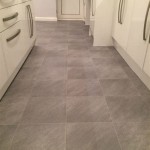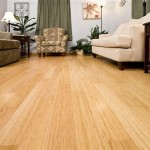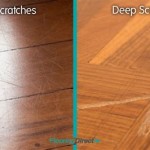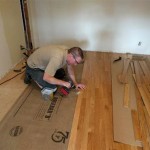Laminate Wood Flooring Characteristics
Laminate wood flooring has become a ubiquitous choice for both residential and commercial spaces, owing to its affordability, durability, and aesthetic versatility. Understanding the key characteristics of laminate flooring is crucial for making informed decisions when selecting materials for a construction or renovation project. These characteristics encompass various aspects, including construction, appearance, performance, and maintenance.
The composition of laminate flooring is multi-layered. At its core is a high-density fiberboard (HDF) or medium-density fiberboard (MDF) core. This core provides the structural stability and impact resistance of the flooring. The core is overlaid with a decorative layer, typically a photographic image of wood grain, stone, or other patterns. This photographic layer is protected by a wear layer, a transparent, durable coating that shields the floor from scratches, stains, and fading. Finally, a balancing layer on the underside of the core provides stability and prevents warping.
The manufacturing process involves bonding these layers together under high pressure and heat. The quality of these materials and the precision of the manufacturing process significantly impact the overall performance and longevity of the laminate floor. Variations in core density, wear layer thickness, and the quality of the photographic image can result in significant differences in durability, appearance, and resistance to moisture.
Durability and Wear Resistance
A primary characteristic of laminate flooring is its durability. The wear layer, typically made of aluminum oxide or melamine, is designed to withstand daily wear and tear, including foot traffic, pet scratches, and furniture movement. The Abrasion Class (AC) rating system is used to assess the wear resistance of laminate flooring. AC ratings range from AC1 to AC5, with higher numbers indicating greater resistance to abrasion. AC1 and AC2 are suitable for light residential use, such as bedrooms, while AC3 is appropriate for general residential use, including living rooms and hallways. AC4 and AC5 are designed for commercial applications with high foot traffic. Selecting a laminate floor with an appropriate AC rating is crucial for ensuring its longevity and maintaining its appearance over time.
The thickness of the wear layer directly correlates with its durability. A thicker wear layer provides greater protection against scratches and wear. The density of the HDF or MDF core also contributes to the overall durability of the floor. A higher density core is more resistant to impact damage and indentation. Furthermore, the quality of the edge sealing is important for preventing moisture from penetrating the core, which can lead to swelling and damage.
Proper installation plays a critical role in maximizing the durability of laminate flooring. Uneven subfloors can cause excessive stress on the laminate planks, leading to premature wear and damage. It is essential to prepare the subfloor adequately before installation, ensuring it is level, clean, and dry. Using an appropriate underlayment can also help to absorb impact and reduce noise transmission, further enhancing the durability and comfort of the floor.
Appearance and Design Versatility
Laminate flooring offers a wide range of aesthetic options, mimicking the look of natural wood, stone, and tile. The decorative layer is a high-resolution photographic image that captures the intricate details of the desired material. Advanced printing technologies allow for highly realistic textures and patterns, making it difficult to distinguish laminate from natural materials in some cases. The embossed-in-register (EIR) technique further enhances the realism by aligning the texture of the wear layer with the image of the wood grain, creating a more authentic feel.
Laminate flooring is available in a variety of plank sizes, widths, and thicknesses. Wider planks can create a more spacious and luxurious feel, while narrower planks can be used to create more intricate patterns. The thickness of the plank affects its stability and impact resistance. Thicker planks are generally more resistant to warping and bending.
Beyond wood-look laminates, options that emulate stone and tile are readily available. These offer advantages such as easier maintenance and warmer feel underfoot compared to their natural counterparts. Stone-look laminates often replicate the textures and colors of materials like slate, marble, and travertine.
The edge profile of laminate planks also contributes to the overall appearance of the floor. Beveled edges create a more defined plank look, while square edges offer a smoother, more seamless surface. The choice of edge profile depends on the desired aesthetic and the design of the space.
Maintenance and Cleaning Requirements
Laminate flooring is generally easy to maintain, requiring only basic cleaning procedures. Regular sweeping or vacuuming is necessary to remove dirt, dust, and debris. A damp mop can be used to clean the floor, but it is important to avoid excessive water, as moisture can damage the core. Using a specialized laminate floor cleaner is recommended, as these cleaners are formulated to remove dirt and stains without leaving a residue. Abrasive cleaners and scouring pads should be avoided, as they can scratch the wear layer.
Preventive measures can help to minimize the need for frequent cleaning and maintain the appearance of laminate flooring. Placing mats at entrances can trap dirt and debris, preventing them from being tracked onto the floor. Using furniture pads under chair legs and furniture feet can protect the floor from scratches and dents. Trimming pet nails regularly can also help to reduce scratches and wear.
While laminate is water-resistant, it isn't waterproof. Spills should be cleaned up promptly to prevent water from seeping into the seams and damaging the core. In areas prone to moisture, such as bathrooms and kitchens, it is important to choose a water-resistant laminate floor and seal the edges properly to prevent water damage.
For more stubborn stains, a mild solution of water and vinegar or a specialized stain remover can be used. It is important to test the cleaner in an inconspicuous area first to ensure that it does not damage the floor. Avoid using steam mops, as the high heat and moisture can damage the wear layer and core.
Over time, the wear layer of laminate flooring may become scratched or dull. In some cases, it may be possible to restore the appearance of the floor by using a specialized laminate floor polish. However, heavily damaged laminate floors may need to be replaced. Selecting a high-quality laminate floor with a durable wear layer and proper maintenance can help to extend its lifespan and maintain its appearance for years to come.
Laminate flooring characteristics and capabilities are consistently evolving, with manufacturers developing new technologies to enhance its durability, appearance, and water resistance. Understanding these advancements is essential for making informed decisions about flooring choices and ensuring that the selected material meets the specific needs of the intended application.

Laminate Flooring

Laminate Flooring Types And S Forbes Home

Good Characteristics Of A Quality Laminated Wooden Flooring Mordani Interiors

Everything You Need To Know About Laminate Tarkett

Types Of Hardwood Flooring Forbes Home

Laminate Flooring Tasteful Trends Interiors

Disadvantages Of Laminate Wood Flooring Key Drawbacks

How To Tell The Difference Between Laminate And Vinyl Flooring Singapore

All You Need To Know About Ac6 Flooring

Explore Our Range Of Premium Laminate Flooring
Related Posts








